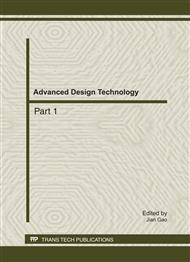p.2398
p.2404
p.2413
p.2418
p.2422
p.2431
p.2436
p.2442
p.2446
Application of Micro-Tube Water-Cooling Device for the Improvement of Heat Management in Mixed White Light Emitting Diode Modules
Abstract:
This paper introduces a module using the RGB-based LED design to improve the thermal management of a mixied white light LED and describes a system for heat dissipation in illuminated, high-power LED arrays. Mixed light LEDs can be produced by combining appropriate amounts of light from the red, green and blue LEDs in an array. A LED cooling system, using a micro- tube water-cooling device, was fabricated. Recycling water in the system, gave more efficient convection and the heat created by the LEDs was easily removed, in the experiments. It was shown that micro-tube water-cooling systems rendered an improvement in thermal management that effectively decreases the thermal resistance and provides very good thermal dissipation. Furthermore, the results of experiment and simulation demonstrated that a micro-tube water-cooling system is very effective in heat dissipation in LEDs and the fabrication of practical micro-water tube cooling devices for mixing light LEDs was feasible and useful
Info:
Periodical:
Pages:
2422-2427
Citation:
Online since:
August 2011
Authors:
Price:
Сopyright:
© 2011 Trans Tech Publications Ltd. All Rights Reserved
Share:
Citation:


